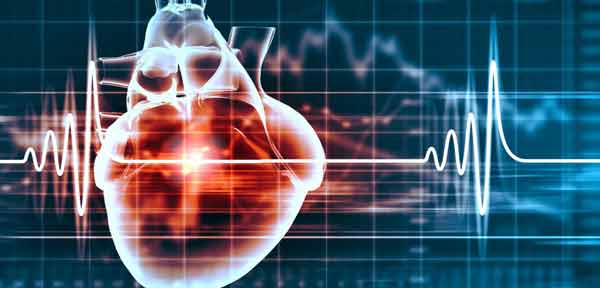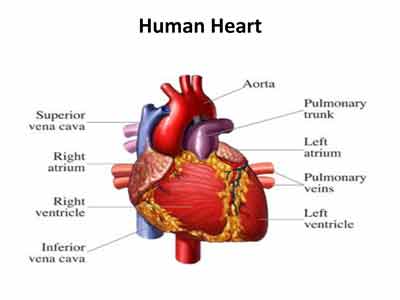 1.The average adult heart beats 72 times a minute; 100,000 times a day; 3,600,000 times a year; and 2.5 billion times during a lifetime.
1.The average adult heart beats 72 times a minute; 100,000 times a day; 3,600,000 times a year; and 2.5 billion times during a lifetime.
2. Though weighing only 11 ounces on average, a healthy heart pumps 2,000 gallons of blood through 60,000 miles of blood vessels each day.
3. A kitchen faucet would need to be turned on all the way for at least 45 years to equal the amount of blood pumped by the heart in an average lifetime.
 4.The volume of blood pumped by the heart can vary over a wide range, from five to 30 liters per minute.
4.The volume of blood pumped by the heart can vary over a wide range, from five to 30 liters per minute.
5. Every day, the heart creates enough energy to drive a truck 20 miles. In a lifetime, that is equivalent to driving to the moon and back.
6.Because the heart has its own electrical impulse, it can continue to beat even when separated from the body, as long as it has an adequate supply of oxygen.
 7. French physician Rene Laennec (1781-1826) invented the stethoscope when he felt it was inappropriate to place his ear on his large-buxomed female patients’ chests.
7. French physician Rene Laennec (1781-1826) invented the stethoscope when he felt it was inappropriate to place his ear on his large-buxomed female patients’ chests.
8. The fetal heart rate is approximately twice as fast as an adult’s, at about 150 beats per minute. By the time a fetus is 12 weeks old, its heart pumps an amazing 60 pints of blood a day.
9. The heart pumps blood to almost all of the body’s 75 trillion cells. Only the corneas receive no blood supply.
 10. During an average lifetime, the heart will pump nearly 1.5 million barrels of blood—enough to fill 200 train tank cars.
10. During an average lifetime, the heart will pump nearly 1.5 million barrels of blood—enough to fill 200 train tank cars.
11.Five percent of blood supplies the heart, 15-20% goes to the brain and central nervous system, and 22% goes to the kidneys.
12. The “thump-thump” of a heartbeat is the sound made by the four valves of the heart closing.
13. The heart does the most physical work of any muscle during a lifetime. The power output of the heart ranges from 1-5 watts. While the quadriceps can produce 100 watts for a few minutes, an output of one watt for 80 years is equal to 2.5 Giga joules.
NEXT

















